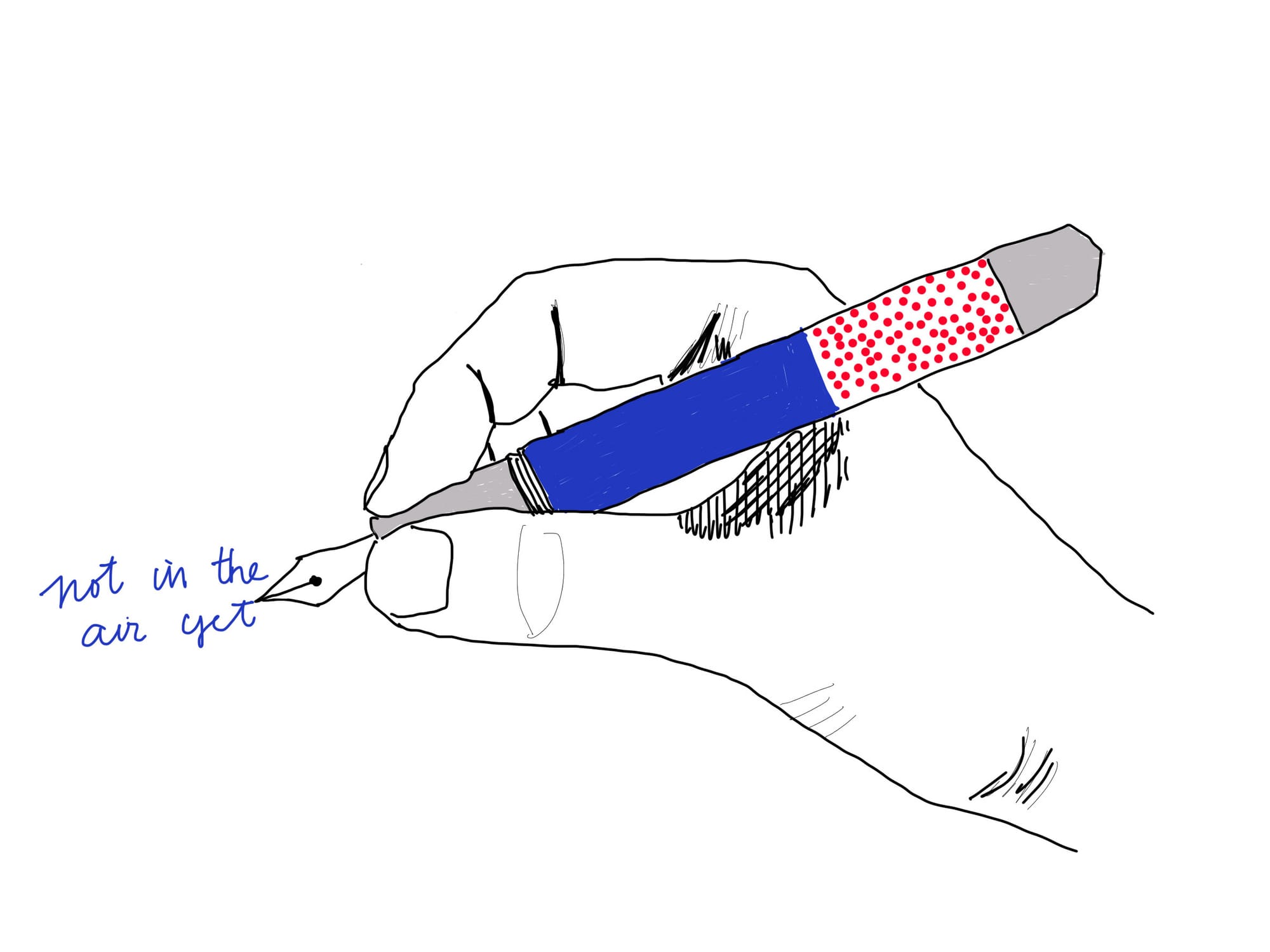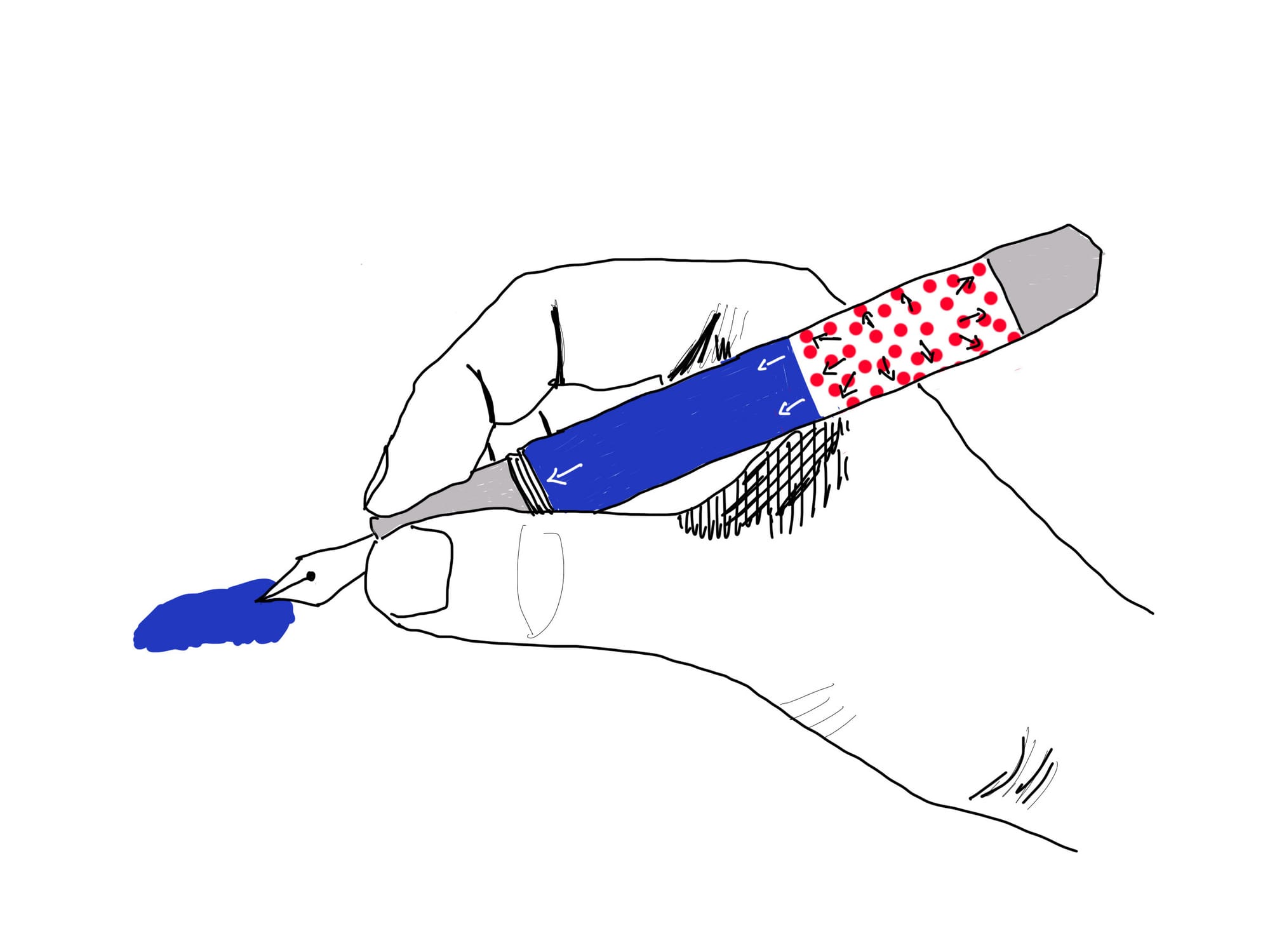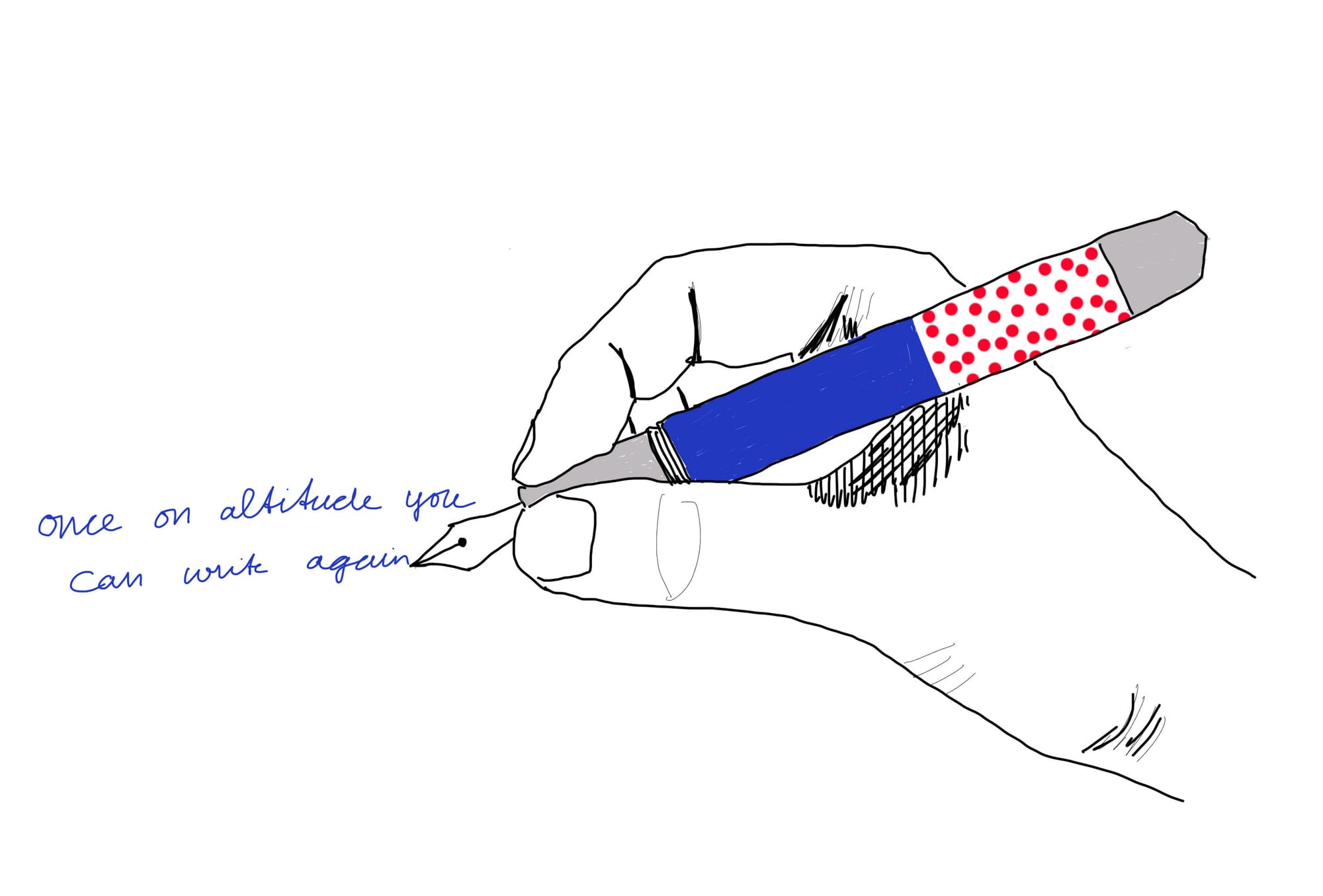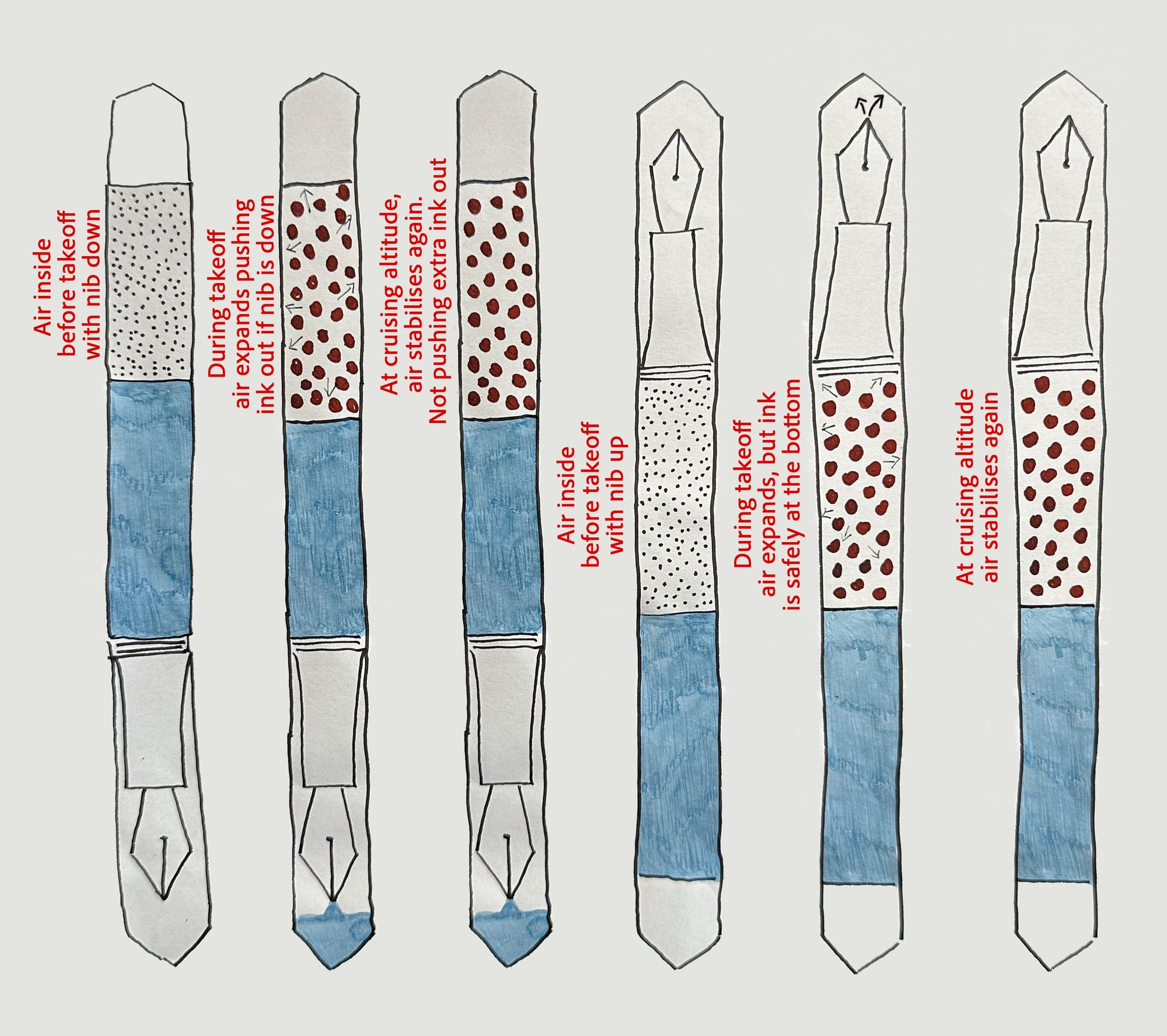Flying with fountain pens
Why do fountain pens leak in flight? How do you prevent it? Read on for more.

Do you love your fountain pens and want to take them while traveling, but are afraid they’ll leak during your flight? Don’t worry—with the proper cautionary steps, this is entirely preventable. In this post, we’ll explain why pens may leak and how to safely travel with them.
But first, we have to understand what is actually happening that causes leaks.
What causes pens to leak when flying?
The way that fountain pens work is itself a controlled leak out of the nib. When you touch the nib to the paper, a small amount of ink leaves the pen and writes out onto the paper. At the same time, an equivalent volume of air enters the pen into the reservoir, taking the place of the ink that just left the pen. So as you use the ink, the ink in the reservoir is replaced by air.
This is not a problem as long as you stay at around the same altitude, and thus the same level of air pressure. But as a plane ascends to higher altitude, air pressure decreases—in other words, the force keeping air compressed into a certain volume decreases and thus air will expand—the same amount of air molecules will take up more and more physical space. This expansion happens to the air inside your pen, and has the effect of pushing out ink in the reservoir into your feed, causing ink to spurt out of the pen.



Illustrations by @Parker51@mastodon.world, licensed under CC4 BY-NC-SA
So to minimize this risk, what we need to do is reduce the amount of air in the pen or remove the air completely.
What not to do
First, do not put inked pens into your checked luggage! The air pressure in the cargo hold is much lower than in the cabin, so air will expand much more. Always bring your pens with you onto the flight.
Second, do not fly with pens which are almost empty, as the ink which remains will get pushed out through the feed.
How to reduce leak potential
For cartridge/converter pens, the most effective way is to travel with your pen empty and put in a cartridge later when you want to use your pen. The second-most effective way would be to fill your pen as completely as possible.
For plunger vacuum fillers and Japanese eyedroppers, seal the ink chamber by closing the blind cap.
For any piston-based filling systems, you can reduce the amount of air in your ink chamber, as long as you still visibly have ink in the chamber. This works for both piston fillers and converters:
- Hold your pen firmly by the section with one hand, with nib up.
- Turn the piston knob slowly anti-clockwise to move the piston gasket toward the nib.
- Continue turning to slowly push the air out of the ink chamber. Watch the feed carefully.
- When the feed starts to flood with ink, you’ve pushed all the air out of the pen that you can. Turn the piston knob back a slight bit so that the ink no longer floods the feed.
In flight
When you get on the plane, put your pen case in the seat-back pocket with nibs up. This ensures that if air expands, gravity will bring the ink back into the pen rather than spitting it into the cap.

If you intend to use the pens in flight, do not use them until the plane reaches cruising altitude. Once at cruising altitude, the air expansion should have run its course and you should be safe to use the pens. There is no issue with using the pens during descent since the increase in air pressure will compress and not expand the air.
When you uncap to use the pens, have a tissue or napkin ready just in case of ink having leaked out.
Traveling with inks
Here are some tips for taking inks on the go:
- Take unused cartridges if your pen takes cartridges. These are sealed and hold up well to pressure changes.
- Ink bottles with a good seal are also OK. For safety, put each bottle in its own ziplock bag.
- Avoid taking sample vials on the plane unless you’re very confident of the seal. If you must, take sample vials with an o-ring in the cap, as those are the safest, but they can still leak if not capped tightly, and as with inks, you'll want to ideally have each in its own small ziplock. For the same reason as the reservoir in your pen, it's best to fill your vials with as much ink as possible, leaving a small gap so that it doesn't spill when you uncap. This reduces the amount of air that can expand.
- The Pineider or Visconti portable inkwells may be helpful if you plan to fill on the go and you won't have a decent place to set up, for example at a conference or during university lectures.
Go forth and write!
Now that you know what to do and what not to do, I hope you feel comfortable taking your pens everywhere you go! If you have more questions, please reach out on Mastodon.




